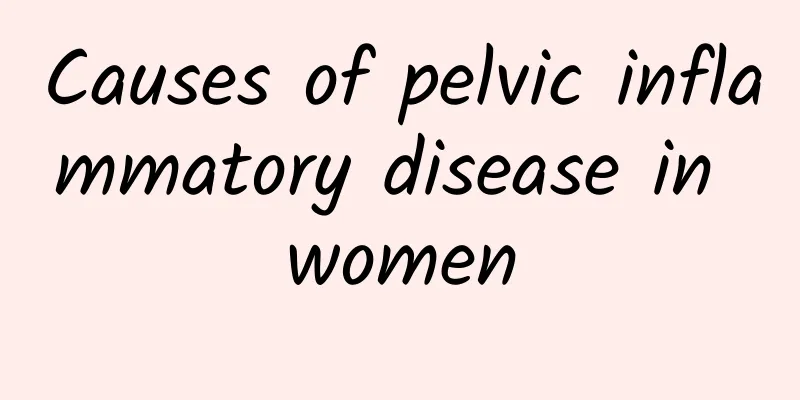What are the treatments for pelvic peritonitis?

|
The principle of treatment for pelvic peritonitis is to actively eliminate the cause of the disease, and at the same time thoroughly clean and absorb the pus and exudate in the abdominal cavity. Finding the cause of the disease can find the appropriate treatment method, so it is an eternal truth to prescribe the right medicine for the right disease. From a medical perspective, the treatment of acute pelvic peritonitis can be divided into the following two types. 1. Non-surgical treatment methods ① Body position: When there is no shock, the patient should take a semi-recumbent position, move the lower limbs frequently, and change the pressure points to prevent venous thrombosis and bedsores. ②Fasting: Patients with gastrointestinal perforation must absolutely fast to reduce continued leakage of gastrointestinal contents. ③ Gastrointestinal decompression: It can reduce gastrointestinal distension and improve gastrointestinal wall blood circulation. It is an indispensable treatment for patients with pelvic peritonitis. ④ Intravenous infusion: Patients with pelvic peritonitis who are fasting must receive infusion to correct water electrolyte and acid-base imbalance. ⑤Supplement calories and nutrition: Acute pelvic peritonitis requires a large amount of calories and nutrition to supplement its needs. ⑥Application of antibiotics: A large amount of broad-spectrum antibiotics should be used in the early stage, and then adjusted according to the results of bacterial culture. Intravenous drip is the best route of administration. ⑦ Analgesia: For patients whose diagnosis has been clear and treatment methods have been decided, it is necessary to appropriately use sedatives and analgesics to relieve the patient's pain. (II) Surgical treatment ① Lesion treatment: Eliminating the cause of pelvic peritonitis is the main purpose of surgical treatment. ② Clean the abdominal cavity: After eliminating the cause of the disease, the pus in the abdominal cavity should be sucked out as much as possible, and the food and residue, feces, foreign objects, etc. in the abdominal cavity should be removed. ③Drainage: so that the remaining inflammation can be controlled, limited and disappear. The above two methods are the treatment of pelvic peritonitis. I hope that the editor's introduction can give you some help. I hope that patients with pelvic peritonitis can choose the treatment method that suits them according to their own condition and the doctor's treatment to relieve the pain of the disease. I also hope that the majority of friends can take care of their bodies and do a good job in the treatment and maintenance of pelvic peritonitis. |
<<: Treatment of pelvic peritonitis
>>: Principles of treatment of pelvic peritonitis
Recommend
What are the prevention methods for cervical hypertrophy?
For women, cervical hypertrophy is a common disea...
What do you think about the causes of cervical hypertrophy?
Nowadays, many female friends suffer from cervica...
How to judge miscarriage
How to determine miscarriage? To determine whethe...
Refuse to be a fat nobleman! Drink hawthorn fat-reducing tea to lose weight naturally in winter
As the end of the year approaches, there are many...
Look here! 10 foods you can eat more of without getting fat
Do you record the calories you eat every day beca...
What are the good ways to check for candidal vaginitis?
Vaginal candidiasis is a relatively easy disease ...
How to treat influenza in adults
Adult influenza treatment needs to be based on th...
Patients with pelvic inflammatory disease should not lose weight excessively
Excessive weight loss and deliberate dieting by p...
Eating pumpkin can improve metabolic syndrome! Nutritionist Xie Yifang reveals: 4 benefits of nutritious light meals
More than half of the top ten causes of death in ...
What should you pay attention to after an abortion?
What should you pay attention to after an abortio...
Cost of endometrial tuberculosis
How much is the cost of endometrial tuberculosis?...
Common symptoms of uterine fibroids that you need to know
There are always some signs in the early stages o...
What are the dangers of menopausal syndrome in women?
Menopausal syndrome is a series of symptoms cause...
What are the symptoms of physiological ovarian cysts?
How big is a physiological ovarian cyst? What are...
Detailed analysis of the six diagnostic methods for pelvic inflammatory disease
Pelvic inflammatory disease has been on the rise ...









